How to build a Marginall
ATTENTION: YOU MUST KNOW HOW TO HANDLE ELECTRICITY, THIS PROJECT CAN GIVES FATAL ELETRIC CHOCKS
This is a generic manual, can be used to create both any size of guitar and bass guitar Marginall.
To understand better about the project and its pieces, read the article about the history behind the Marginall
Ingredients
- 1 cabinet to put the speakers
- 1 guitar or bass pedal with volume control - I recomend an equalizer or pre-amp
- 1 P10 male x RCA male cable, or anything using adapters
- 1 car system amplifier - more details below
- speakers wires
- 1 power plug with wires
- 1 12 volts power supply, minimum 30 amperes - check the car amplifier manual
- 3 “Y” RCA cables - the car amplifier usually comes with 2
If you won’t connect the speakers directly to the output channels, as it is done in the Version Two - Flex:
- 1 big tic tac candy case
- 1 small case
- 2 pedal cables
- 5 female p10 jacks
- 1 adition pedal with volume control, in case you want to play two instruments at once.
Choosing the speakers and the car system amplifier
Doesn’t matter the size in inches of the spealers, for the project what matter is theis Watts and impedance in ohms.
The sum of the speakers’s Watts must be bigger thant the car system amplifiers channels, to not damage the speakers.
It is crucial the final impedance of the speakers be equal or greater than the impedance of the car amplifier output channels. Equal is better. Read this article carefully to understand how the speakers connections are made.
My recomendation is using minimum of 4 ohms. Observing amplifiers, looks like the ohms matter for sound quality.
My recomendation is choose the speakers first, and based on them, the car system amplifier.
Another recomendation is to use guitar and bass guitar speakers, not regular woofers. If you don’t find it, read the history of the Marginall to help you.
In the Marginall Version One, I choose four 150 Watts 8 ohms generic speakers, 2 for each output channel. Wiring 2 speakers in paralell we get 300 Watts and 4 ohms (as seen in the link above). For them I choose a car system amplifier with four 60 Watts and 4 ohms channels, that make two 200 Watts and 4 ohms “bridged” channels.
In the Marginall Version Two - Flex, I choose two 75 Watts and 8 ohms guitar speakers and two 100 Watts and 8 ohms bass guitar speakers. For this I choose an amplifier with four 100 Watts and 4 ohms channels, that gives two 320 Watts and 4 ohms “briged” channels.
Always read car system amplifier manual, it helps using the correct configurations. Whe buying them, read carefully their specs, specially for the channels.
I preffer the Version Two - Flex car system amplifier. Its connections are simplier. The Version One’s comes with a plug with a lot of wires, hard to configure.
And of course, if somebody gives you a car system amplifier or you already have one, check its channels and buy the speakers based on them.
Speakers installation
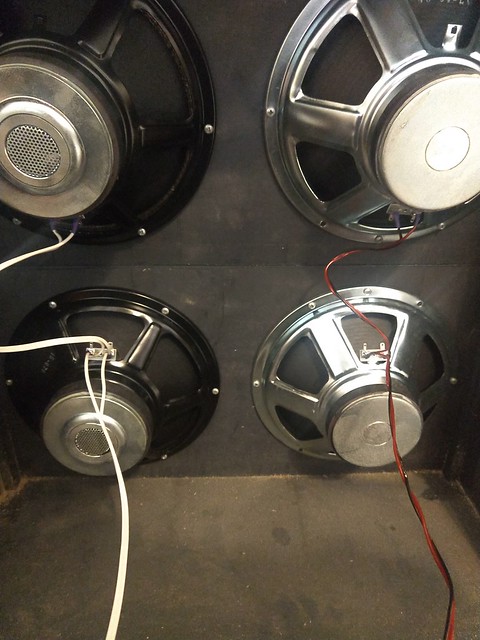
In both Marginalls I wired the speakers in pairs.
The photo above is from the Marginall Version Two - Flex, a pair of bass guitar speakers (white wire), and a pair of guitar speakers (black-red wire). I connected the speakers’ positive pole (+) together, and the same for the negative (-). It is a parallel connection.
Connecting the speakers direct to the output channels
In a four channels car system amplifier that can make “bridged” channels, we can use them as below:
- 4 separated channels, total: 4 channels
- 2 separated channels and 2 in “bridged” mode, total: 3 channels
- 2 channels in “bridged” mode e 2 channels in “bridged mode”, total: 2 channels
In this photo we used channel 3 and 4 separated, we can do the same for channels 1 and 2:
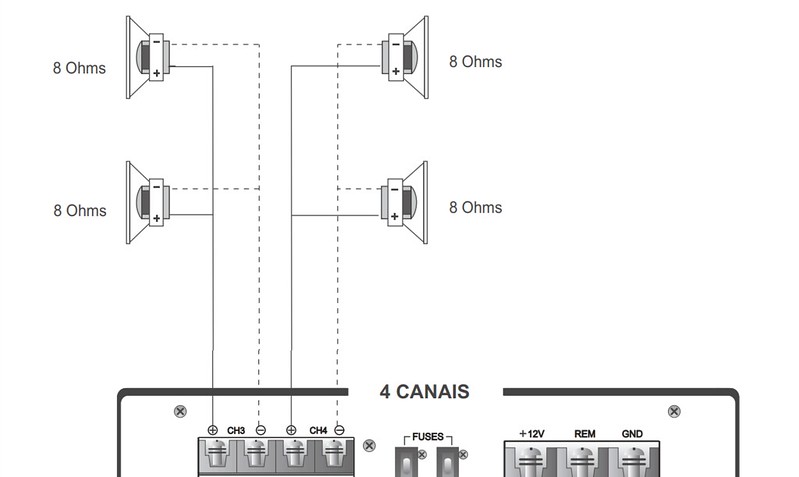
In this photo we used channels 1 and 2 in “bridged” mode, we can do the same for channels 3 and 4:
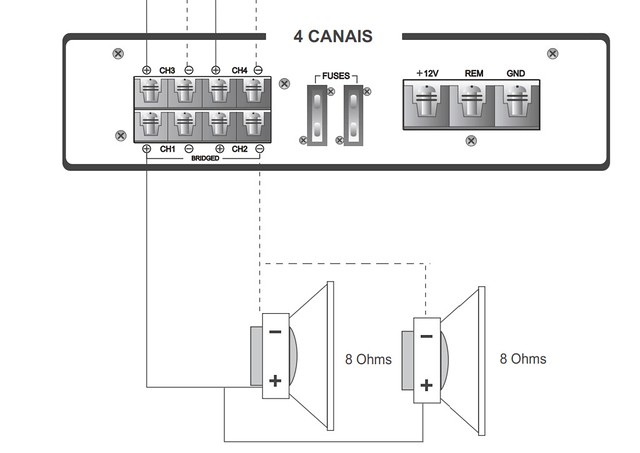
This is the Version Two - Flex configuration, two 100 Watts channels and a “bridged” 320 Watts channel.
In the Version One I connected the speakers direct to the amplifier output channels.
Amplifier details:

Connecting the speakers using a “switch”
In the Marginall Version Two - Flex, I build a “swithc” to exchange channels between the pairs of spekaers.
Instead of connect the speakers wires directly, I put them in a small box using 2 p10 female jacks.

The white wire is connected to a jack, and the black-red wire in another jack.
Then I build another box, using a big tic tac cand case. Look at the photo above, it has 3 channels.
For each amplifier output channel, I put a p10 female jack. To connect them to each pair of speakers, I used pedal cables.
The pedal cable colors helps too. I know the blue cable is connected to white wire of the bass guitar speakers, and the red pedal cable is connected to the black-red wires of the guitar speakers.
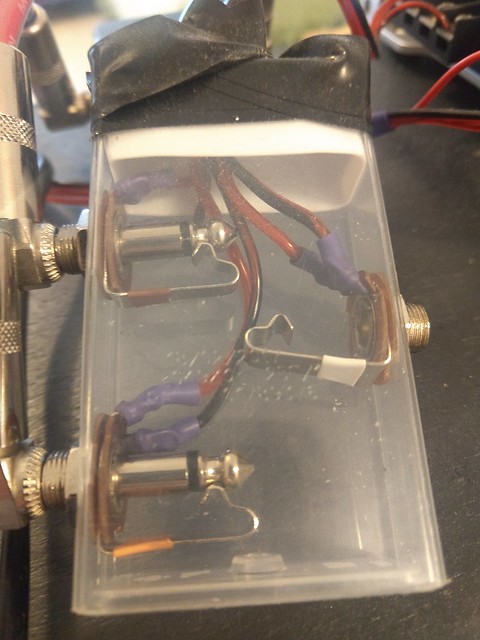
To organize the jacks and their output channels, I labeled them with colors. In the photo above you can see white, brown and orange labels in the jacks.
The same labels are in the output channels wires, look below:
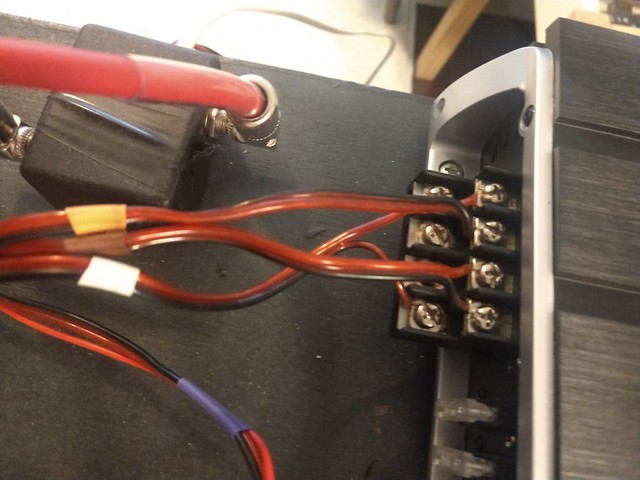
In the photo below you can see the bass guitar speakers (blue cable) are connected to the 100 Watts channel, and the guitar speakers (red cable) are connected in the other 100 Watts channel.

In the photo below, you can see the bass guitar speakers (blue cable) in the 320 Watts “bridged” channel, and the guitar speakers in a 100 Watts channel.
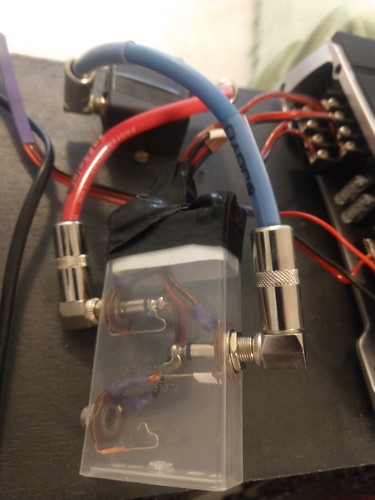
Connecting the power-supply
The power-supply usually comes with 9 pins, in this sequence: three positive 12 volts pins, 3 negative, 1 ground pin to the wall plug, 1 neutral pin, 1 hot pin:

The amplifier power connection is this:
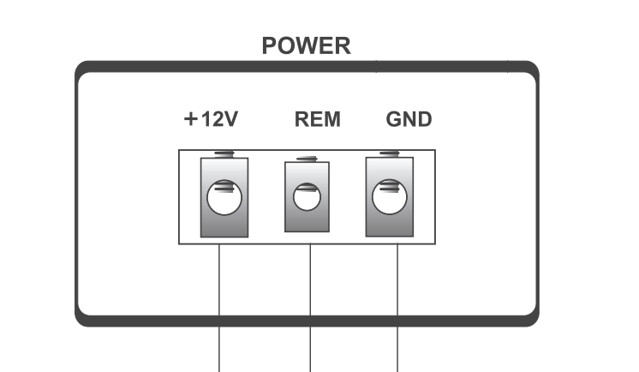
To connect the amplifier in the power supply:
- amplifiers’ 12 volts in a 12 volts positive pin
- amplifiers’ REM in a 12 volts positive pin
- amplifiers’ GND in a 12 volts negative pin
And them the power-supply to the wall plug like this (note: it works for Brazil, make sure you understand you country’s standard):
- A wall plug wire in the Neutral pin
- A wall plug wire in the Hot pin In most countries, the Neutral and Hot wire order matters, and it is crucial to plug the Ground pin correctly to avoid accidents.
See the amplifier output channels at left and the amplifier power-supply connection at right:
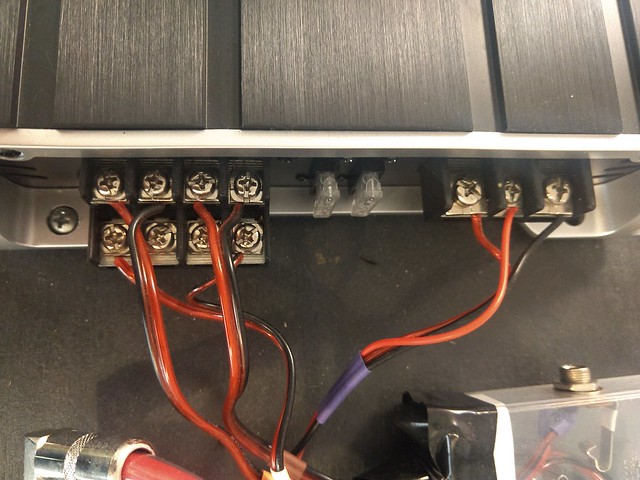
Connecting the pedal (pre-amplifier)
Always turn down the pedal volume.
The the sound reach the amplifier you only need to connect the pedal output to a amplifier input. The input channel 1 corresponds to the output channel 1, and so on.
You can use a p10 male x RCA male cable, or any kind of adpater. In the photo below we have a RCA cable with a P10 adapter:
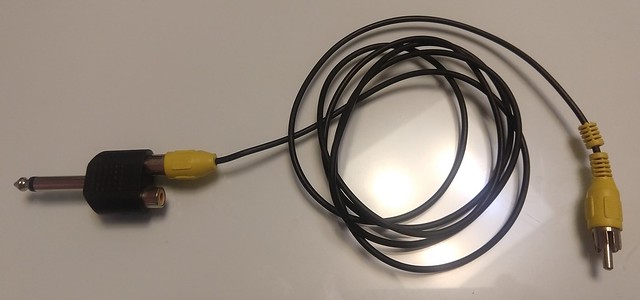
The input connection must be the same as the outpout to the speakers. You can use separated input channels or you a “Y” RCA cable.
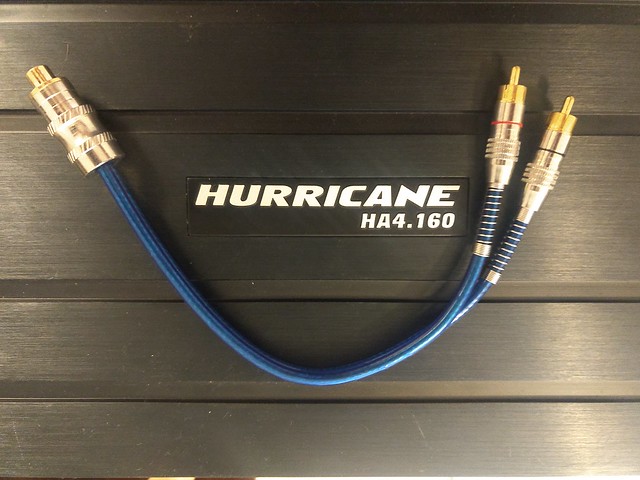
In the Marginall Version One, we connected the pedal output in all channels. One guitar to all speakers. An easy way to do so is use three “Y” RCA cables. One for each 2 channels, and another to connect them together to the pedal output.
Input channels detail:

In the Marginall Version Two - Flex, there other possibilies.
Using one channels, in this case the channel 3:
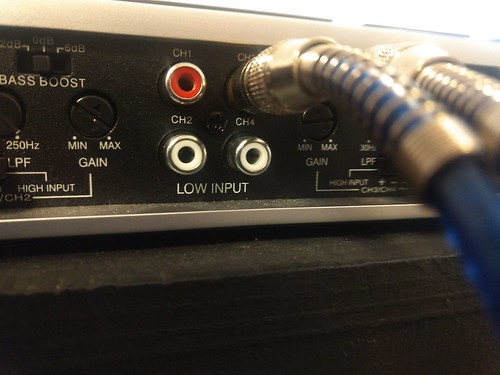
Using two channels, with a “Y” RCA cable:
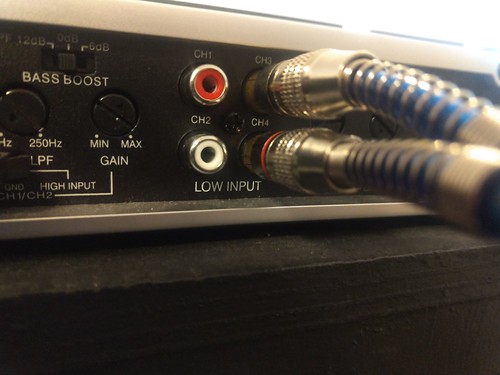
And to use a “bridged” channel, you must use the two input channels that compose them. As in the photo below, the channels 1 and 2. For this, a “Y” RCA cable is necessary:

To play one instrument, using one channel (channel 3) and a “bridged” channel (channel 1 and 2), two “Y” RCA cables are necessary:
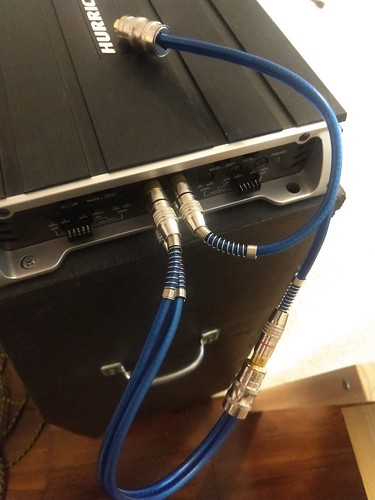
See how the pedal to amplifier connect looks like, using the 100 Watts channel 3 input and the 100 Watts channel 4 input, using the four speakers:
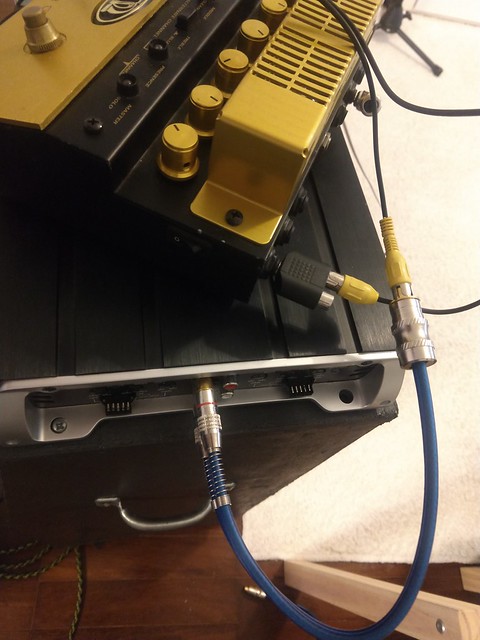
If you want to use two instruments at the same time, like a guitar and a bass guitar, just get another pedal.
If you build one, tell us, send pictures, open an issue in the project.